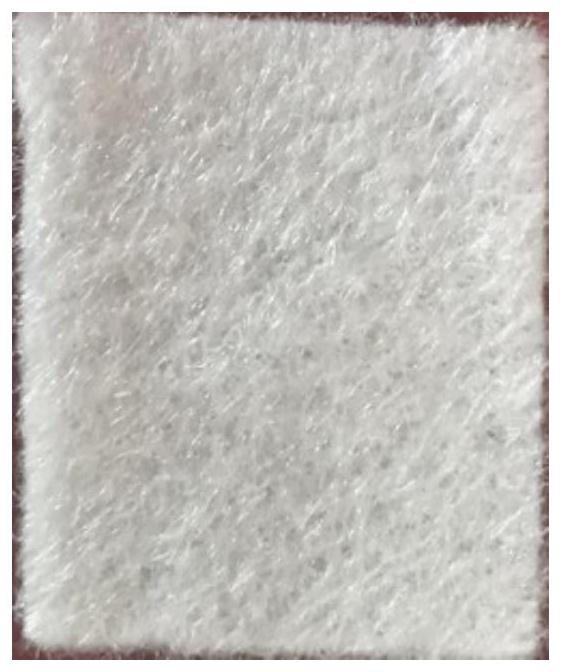Novel composite hydrogel stent prepared by 3D biological printing technology and application of novel composite hydrogel stent
A composite hydrogel and bioprinting technology, which is applied in bandages, additive processing, medical science, etc., can solve the problems of failure to significantly promote wound healing, limited cell proliferation and tissue regeneration, and slow wound healing, so as to promote Wound healing effect, good scaffold degradation rate, and accelerated healing effect
- Summary
- Abstract
- Description
- Claims
- Application Information
AI Technical Summary
Problems solved by technology
Method used
Image
Examples
Embodiment 1
[0067] Example 1 A preparation method of a novel composite hydrogel scaffold based on 3D bioprinting technology
[0068] 1. Experimental method
[0069] The preparation method of the new composite hydrogel scaffold based on 3D bioprinting technology is as follows: figure 2 As shown, the specific steps are as follows:
[0070] (1) Preparation of oxidized sodium alginate by oxidation of periodic acid: Take 1g of sodium alginate SA to prepare 100mL of 1% (w / v) solution, mix with 1mL of 0.25M periodic acid solution, and stir for 24 hours in the dark, then add 4mL ethylene glycol and 2.5g NaCl, and then precipitated with excess ethanol. The precipitate collected by centrifugation was redissolved in distilled water, precipitated with ethanol again, and finally the precipitate was freeze-dried to obtain oxidized sodium alginate OSA.
[0071] (2) Co-precipitation method to prepare calcium carbonate particles: Na 2 CO 3 Powder 0.106g and casein powder 0.160g were dissolved in 20m...
Embodiment 2
[0087] The characteristic of embodiment 2 hydrogel support
[0088] 1. Scanning electron microscope analysis
[0089] 1. Experimental method
[0090] SEM was used to observe the surface morphology of the scaffold prepared in Example 1, the cross-sectional morphology of the struts, and the like.
[0091] 2. Experimental results
[0092] The SEM images show the overall and microstructure of the hydrogel scaffold printed according to the design pattern and the cross-sectional microstructure of the magnification (such as Figure 4 ). CaCO 3 The microspheres are uniformly filled in the hydrogel scaffold and evenly dispersed on the surface of the scaffold. The cross-sectional images show that the scaffold has a porous and three-dimensional interconnected microporous structure, which is conducive to material exchange.
[0093] 2. Effect of chronic wound pH on hydrogel scaffolds
[0094] The hydrogel scaffold was incubated in pH 6.4 PBS buffer solution (since the pH of chronic ...
Embodiment 3
[0095] Example 3 The influence of hydrogel scaffolds on chronic wounds
[0096] 1. General observation of the stent on the wound surface in vivo
[0097] 1. Experimental method
[0098] Apply the dry and sterile stent prepared in Example 1 on the wound, and observe the changes of the stent on the wound on the day of operation and the next day.
[0099] 2. Experimental results
[0100] The hydrogel scaffold can be freely cut according to different wound surfaces, and the microporous structure of the scaffold remains intact. When the dry stent is applied to the wound, the stent can quickly absorb the wound exudate and return to the hydrogel state to form a moist microenvironment, which is conducive to the rapid migration and proliferation of fibroblasts and accelerates wound healing. On the second day after surgery, the scaffold in the hydrogel state can not only fill the cavity of the wound bed, but also maintain its microporous structure without affecting the delivery of ox...
PUM
| Property | Measurement | Unit |
|---|---|---|
| pore size | aaaaa | aaaaa |
Abstract
Description
Claims
Application Information
 Login to View More
Login to View More - R&D
- Intellectual Property
- Life Sciences
- Materials
- Tech Scout
- Unparalleled Data Quality
- Higher Quality Content
- 60% Fewer Hallucinations
Browse by: Latest US Patents, China's latest patents, Technical Efficacy Thesaurus, Application Domain, Technology Topic, Popular Technical Reports.
© 2025 PatSnap. All rights reserved.Legal|Privacy policy|Modern Slavery Act Transparency Statement|Sitemap|About US| Contact US: help@patsnap.com



